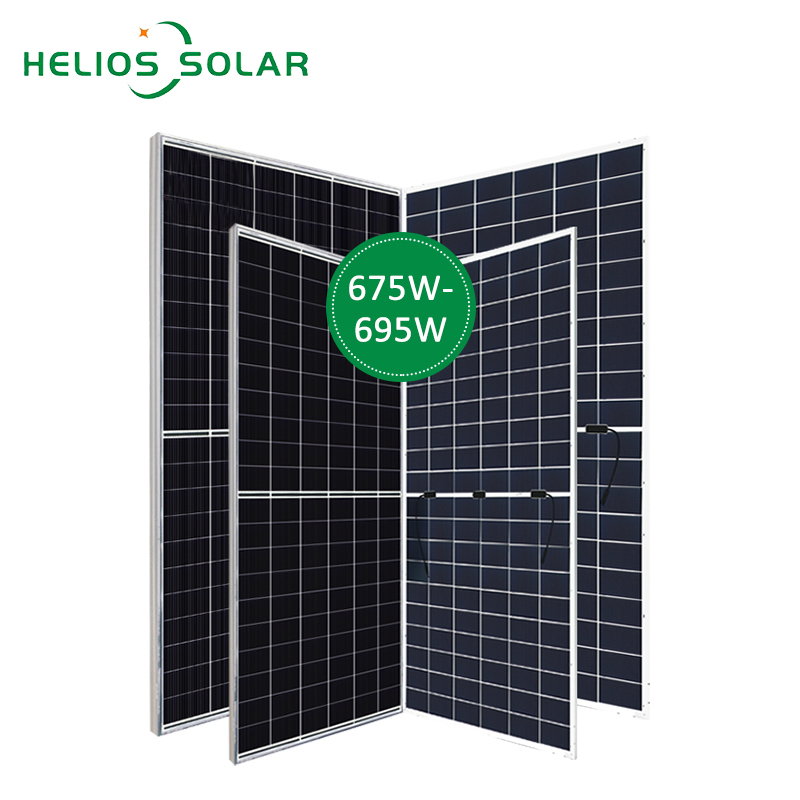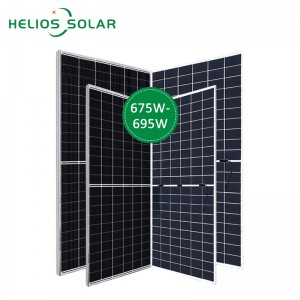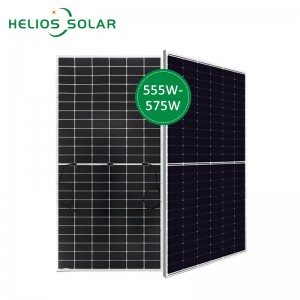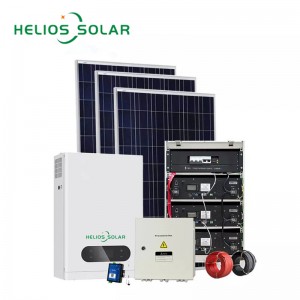
675-695W Monocrystalline Solar Panel
Key Parameters
| Module Power (W) | 560~580 | 555~570 | 620~635 | 680~700 |
| Module Type | Radiance-560~580 | Radiance-555~570 | Radiance-620~635 | Radiance-680~700 |
| Module Efficiency | 22.50% | 22.10% | 22.40% | 22.50% |
| Module Size(mm) | 2278×1134×30 | 2278×1134×30 | 2172×1303×33 | 2384×1303×33 |
Advantages of Radiance TOPCon Modules
The recombination of electrons and holes on the surface and any interface is the main factor limiting cell efficiency, and
various passivation technologies have been developed to reduce the recombination, from early-stage BSF (Back Surface Field) to currently popular PERC (Passivated Emitter and Rear Cell), latest HJT (Heterojunction) and nowadays TOPCon technologies. TOPCon is an advanced passivation technology, which is compatible with both P-type and N-type silicon wafers and can greatly enhance cell efficiency by growing an ultra-thin oxide layer and a doped polysilicon layer on the back of the cell to create a good interfacial passivation. When combined with N-type silicon wafers, upper efficiency limit of TOPCon cells is estimated to be 28.7%, outclassing that of PERC, which would be about 24.5%. TOPCon's processing is more compatible to the existing PERC production lines, thus balancing better manufacturing cost and higher module efficiency. TOPCon is expected to be mainstream cell technology in the coming years.
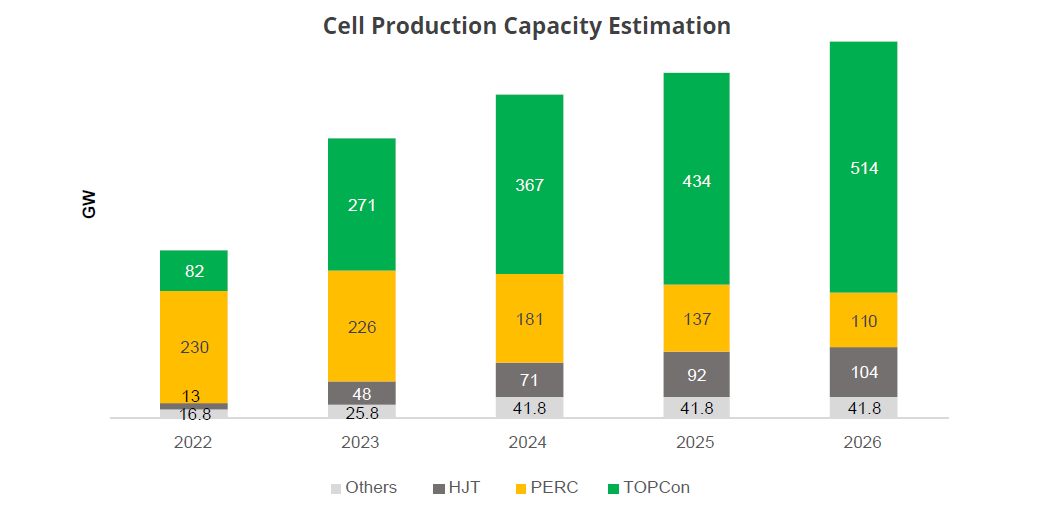
More Energy Yield
TOPCon modules enjoy better low-light performance. Improved low light performance is mainly related to the optimization of series resistance, leading to low saturation currents in TOPCon modules. Under low-light condition (200W/m²), performance of 210 TOPCon modules would be about 0.2% higher than 210 PERC modules.
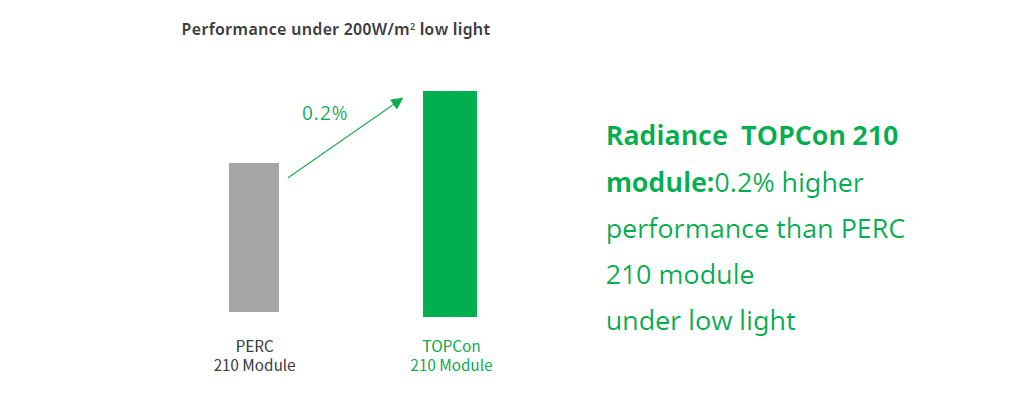
Better Power Output
Modules’ operating temperature impacts their power output. Radiance TOPCon modules are based on N-type silicon wafers with high minority carrier lifetime and higher open-circuit voltage. The higher open-circuit voltage, the better module temperature coefficient. As a result, TOPCon modules would perform better than PERC modules when operating in high temperature environments.
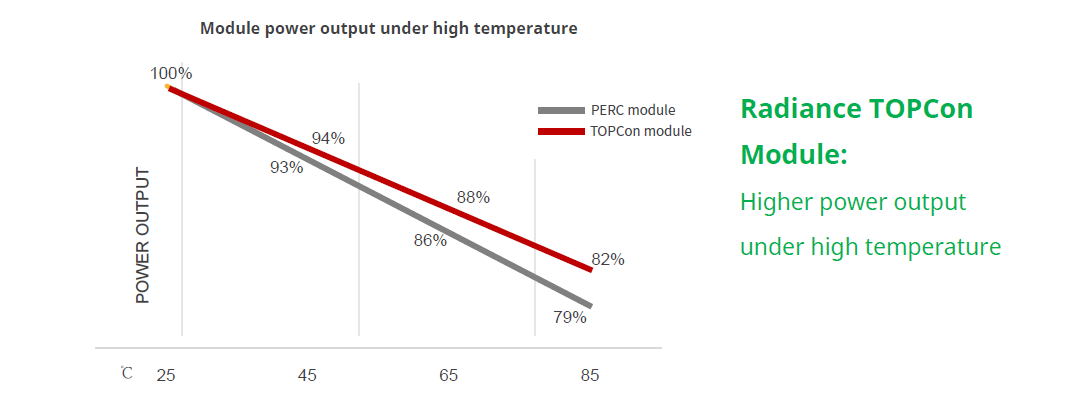
Why Choose Our Monocrystalline Solar Panels
Q: What is a monocrystalline silicon solar panel?
A: A monocrystalline solar panel is a type of solar panel made of a single crystal structure. This type of panel is known for its high efficiency and stylish appearance.
Q: How do monocrystalline solar panels work?
A: Monocrystalline solar panels convert sunlight into electricity through the photovoltaic effect. The panel's single-crystal structure allows for better electron flow, resulting in higher energies.
Q: What are the advantages of using monocrystalline silicon solar panels?
A: Monocrystalline solar panels offer several advantages over other types of solar panels, including higher efficiency, better performance in low-light conditions, longer lifespan, and sleek aesthetics.
Q: How efficient are monocrystalline solar panels?
A: Monocrystalline solar panels are considered to be one of the most efficient types of solar panels. They are typically 15% to 20% efficient, making them a popular choice for residential and commercial installations.
Q: Do monocrystalline solar panels require a specific type of installation?
A: Monocrystalline solar panels can be installed on various types of roofs, including flat roofs, pitched roofs, and pitched roofs. They can also be easily installed on the ground if roof installation is not feasible.
Q: Are monocrystalline solar panels durable?
A: Yes, monocrystalline solar panels are known for their durability. They are made of high-quality materials that can withstand harsh weather conditions, including hail, strong winds, and snow.
Q: How long is the service life of monocrystalline silicon solar panels?
A: Monocrystalline solar panels have a long service life, usually 25 to 30 years. With regular maintenance and proper care, they can last even longer.
Q: Are monocrystalline silicon solar panels environmentally friendly?
A: Yes, monocrystalline solar panels are considered environmentally friendly because they generate clean and renewable energy and emit no greenhouse gases or pollutants. They help reduce carbon footprint and fight climate change.
Q: Can monocrystalline solar panels save electricity bills?
A: Yes, by harnessing the power of the sun, monocrystalline solar panels can significantly reduce or even eliminate your dependence on traditional grid power, saving you a lot on your electricity bills in the long run.
Q: Do monocrystalline solar panels require regular maintenance?
A: Monocrystalline solar panels require minimal maintenance. Periodic inspection, cleaning and avoiding shade are recommended to ensure optimum performance.

